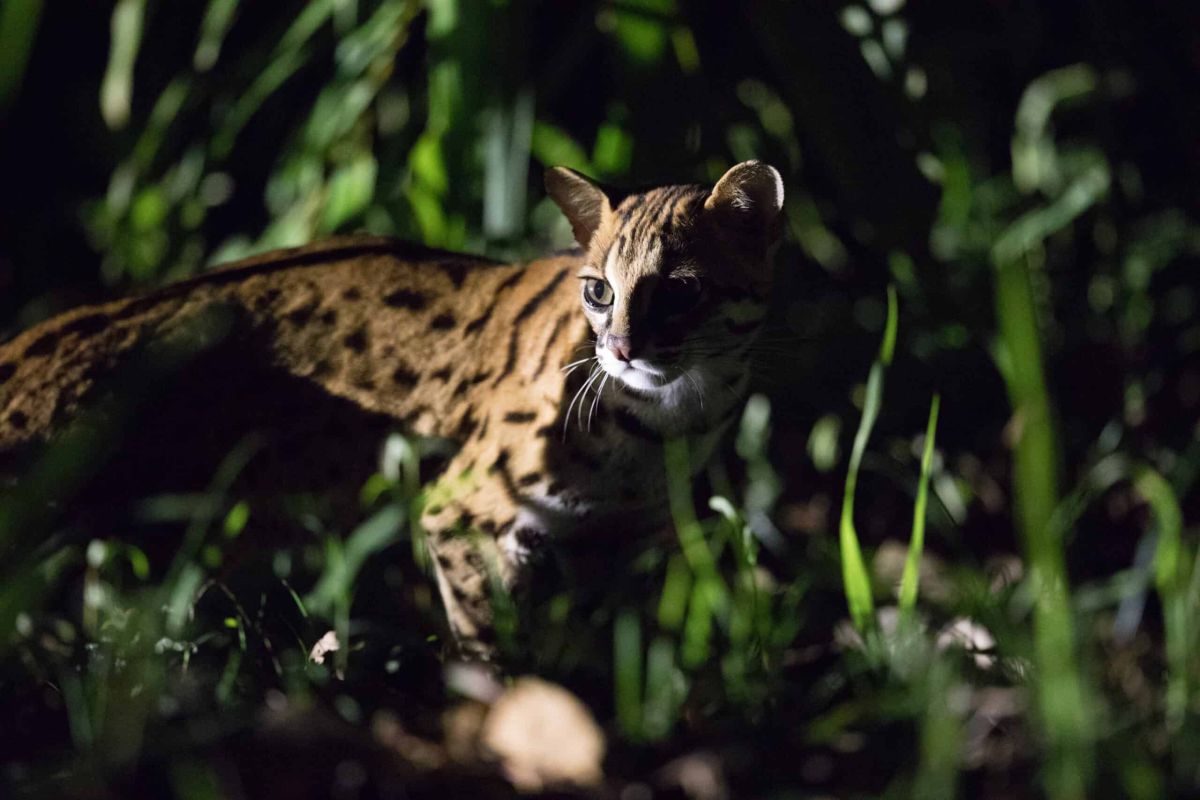The Sunda Leopard Cat

Deep within the rainforests and mangroves of Southeast Asia, a tiny predator prowls, its spotted coat blending seamlessly with the shadows. This is the Sunda Leopard Cat ( Prionailurus javanensis), a secretive feline that often goes unnoticed, but plays a vital role in the delicate ecosystems it inhabits. Not to be confused with its larger cousin, the leopard, this diminutive creature is a marvel of adaptation and a testament to the hidden biodiversity of the region.
A Master of Camouflage and Agility:
The Sunda Leopard Cat is a small, slender feline, typically weighing between 3 to 7 kilograms (6.6 to 15.4 pounds). Its most distinctive feature is its coat, adorned with dark spots or rosettes that run from its forehead to the base of its tail. These markings vary slightly from individual to individual, mirroring the diversity of the habitats they reside in. The pale underbelly and white spots on the back of the ears provide additional camouflage and may play a role in communication. Short legs and a long, agile body allow it to navigate dense undergrowth and climb trees with ease.
Where the Wild Things Are:
This elusive cat is primarily found in Southeast Asia, including the islands of Java, Bali, Borneo, Sumatra, and the Philippines. It demonstrates remarkable adaptability, thriving in a variety of habitats, from lowland forests and coastal mangroves to agricultural areas and even rural gardens. This flexibility has allowed them to survive in increasingly fragmented landscapes, but also exposes them to new challenges.
More Than Just a Pretty Face: The Life of a Leopard Cat:
Sunda Leopard Cats are primarily nocturnal and crepuscular, making them difficult to observe in the wild. They are solitary hunters, primarily feeding on small mammals like rodents, birds, lizards, frogs, and insects. Their sharp claws and teeth, coupled with their keen senses, make them efficient predators. They are also known to be excellent swimmers and have been observed hunting fish and other aquatic creatures.
Little is known about their specific breeding habits in the wild. However, based on observations in captivity, they are thought to have litters of 1-4 kittens after a gestation period of around 65-70 days. The kittens are born blind and helpless, relying entirely on their mothers for care.
Challenges and Conservation Efforts:
Despite their adaptability, the Sunda Leopard Cat faces several significant threats. Habitat loss and fragmentation due to deforestation, agricultural expansion, and human encroachment are among the most serious. They are also vulnerable to poaching for their fur and are often killed as pests by farmers.
The Sunda Leopard Cat is currently listed as “Least Concern” on the IUCN Red List, which can be misleading. While not globally threatened, several populations face significant pressures, and the species’ conservation status is constantly being reviewed.
Recognizing the need for action, several organizations and local communities are working to protect the Sunda Leopard Cat and its habitat. These efforts include:
- Habitat Protection: Establishing protected areas and promoting sustainable land use practices.
- Anti-Poaching Measures: Strengthening law enforcement and tackling illegal wildlife trade.
- Community Engagement: Raising awareness among local communities about the importance of biodiversity and the role these cats play in the ecosystem.
- Research: Conducting further studies to better understand their distribution, population dynamics, and behavior.
A Future in the Shadows?
The Sunda Leopard Cat, with its captivating beauty and secret life, serves as a reminder of the rich biodiversity that thrives in Southeast Asia. While their resilience is admirable, their future depends on our collective efforts to protect their habitat and address the threats they face. By supporting conservation initiatives and promoting responsible land management, we can ensure that this elusive jewel continues to prowl the rainforests and mangroves for generations to come.
In Conclusion:
The Sunda Leopard Cat may be small, but its importance to the ecosystem is undeniable. This fascinating feline deserves our attention and protection. As we learn more about their hidden lives, we can work towards a future where they can thrive alongside humans, a future where their wild beauty is preserved for all.



